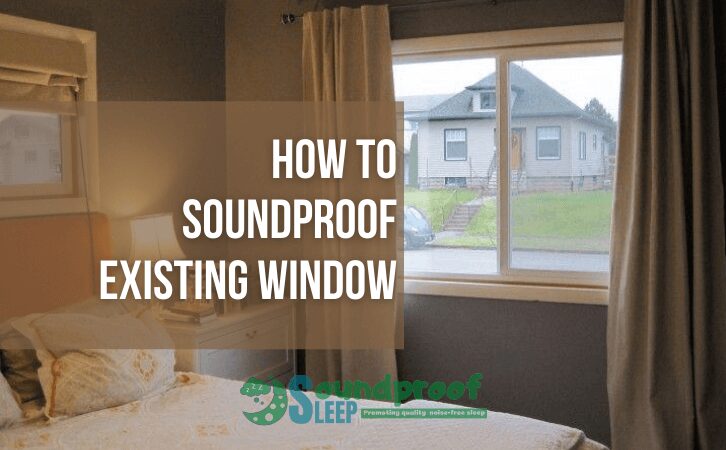Standard windows and doors are very bad at blocking out noise. Windows, if facing a street, will let in all manner of noise from traffic, barking dogs, or noisy neighbors. Installing soundproof windows is the best solution. However, they are expensive, and you will most likely have to bring in professionals for that job. In this post, I cover how you can soundproof existing windows to get a reasonable amount of peace from the comfort of your home.
Before starting this project, it is important you first understand how noise passes through your windows. Noise can pass through the window panes, through the wall and window partition or cracks and gaps around the window.
With that said, here are some ways you can soundproof windows in your home.
How to Soundproof Existing Windows
- Seal Gaps & Cracks around the Windows
- Using Sound Blocking Treatments
- Make a Window Plug
- Use window inserts
[sta_anchor id=”seal-gaps-and-cracks-around-window”]1. Seal Gaps & Cracks Around the Windows[/sta_anchor]
The first step when working to soundproof an existing window should be to check for cracks and gaps around the perimeter of the window and seal them.
The easiest way to spot cracks and gaps is to look around the window marking any potential openings. Using a candle can also help find even the smallest cracks around the window. Light the candle and move it around the window. Because cracks let in air, they will cause the candlelight to flicker.
Cracks are also mostly found on the borders where the window joins the wall, so be sure to check properly.
Once you have identified and marked the cracks and gaps, it is time to seal them up.
The easiest way of doing this is by using acoustic caulk/sealant. Acoustic caulk is a rubbery material designed to absorb sound. Unlike regular caulk, acoustic caulk remains soft and pliable even after setting so that no cracks redevelop with time to allow noise to seep through.
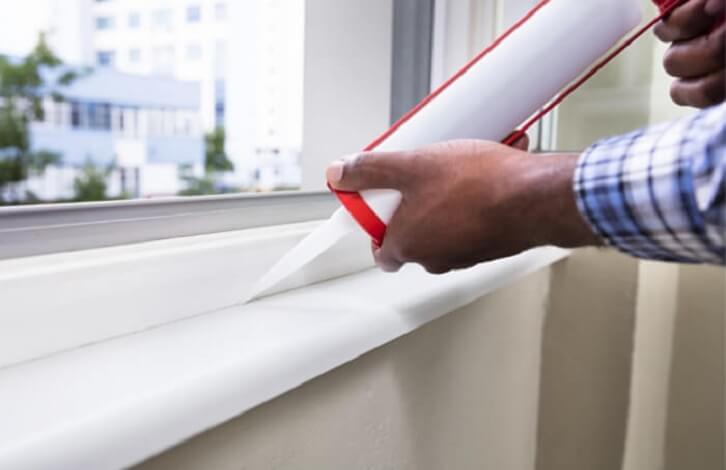
For a good acoustic caulk, Green Glue Noiseproofing Sealant is a very good choice. TMS Acoustical Caulk is also a good option in case the Green Glue acoustic sealant is not available.
When applying acoustic caulk properly clean the area and make sure it is dry. Remove any debris or lose objects when applying acoustic caulk. The sealant should not be applied in areas where it will affect the normal operation of the window.
Apart from using acoustic caulk on gaps and cracks, weatherstripping is also another alternative. Using weatherstripping tape can close bigger gaps around the windows. Weatherstripping tapes come in different materials like rubber, foam, or silicone. Weatherstripping tapes are easy to apply and are designed to stick very well to the surface when applied correctly.
[sta_anchor id=”use-sound-blocking-treatments”]2. Using Sound Blocking Treatments[/sta_anchor]
Sound blocking treatments do not block out sound, but instead, they work by absorbing sound before it enters a room. Thick drapes, soundproof curtains, blinds/shades, and soundproof blankets can all be used to reduce the intensity of sound through a window.
Soundproof or sound-deadening curtains are a fast way of that will help to absorb sound and soften it. This type of curtain is usually made of thick and heavy fabrics with a vinyl lining to absorb sound. It is important to mention soundproof curtains do not block out sound, but they work to dampen and reduce its intensity.
Nicetown has several soundproof curtains that come in different colors and sizes. The NICETOWN Blackout Curtains Panels for Bedroom is a good pick you can check out.
Soundproofing blankets are also a good alternative to soundproof curtains. Curtains are relatively thin, but soundproof blankets are thicker, which helps them absorb more noise. Soundproof blankets can either be made of cotton, polyester, vinyl, or fiberglass.
The Audimute Sound Absorption Sheet Sound is a great option you can buy. It comes in different colors, and the package includes quick hanging knob and screws for easy installation. Quilted fiberglass panels are also a good option and better option you can choose instead of soundproof blankets.
Installing double-cell shades, also known as cellular shades or honeycomb shades can also absorb sound and reduce its intensity.
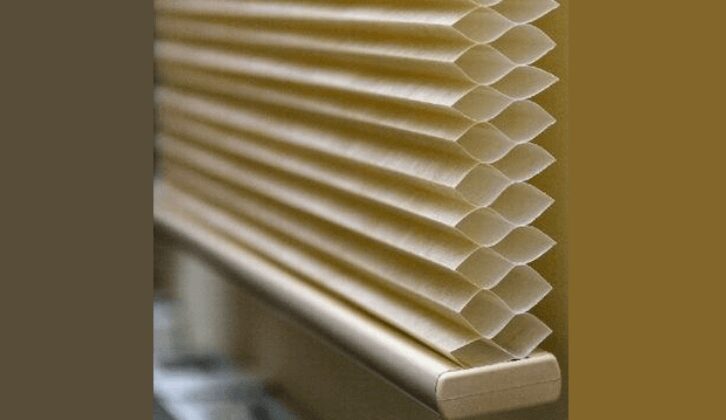
Double cell shades are much better compared to single-layer shades for soundproofing. Apart from soundproofing, shades also have several purposes. They can insulate a room, and also block out light.
[sta_anchor id=”make-a-window-plug”]3. Make a Window Plug[/sta_anchor]
A window plug is a very effective way of blocking noise coming through a window. Window plugs work very well in the bedroom or where a temporary solution is required to block out noise. It is important to consider that light will be blocked when using a window plug. They can, however, be installed at night when sleeping, and removed during the daytime.
To build a window plug, first, you need to measure the internal perimeter of the window and the material to fit correctly. Also, check the depth to the sill to determine how thick the window plug will be built. If the thickness is 4″, then it is advisable to use a 2″ or 3″ thick material. The dead space left will work to reduce noise transmission to the room.
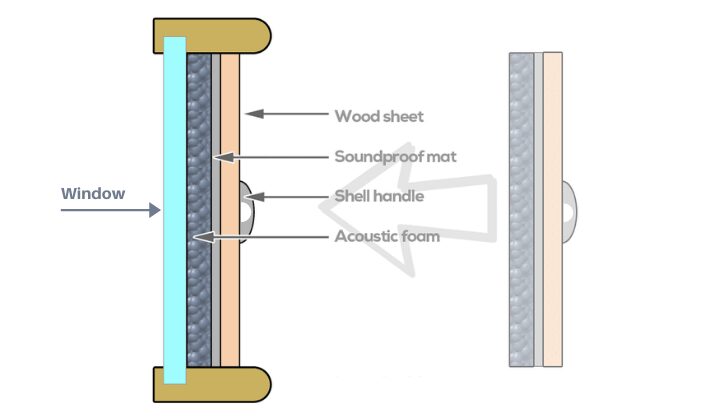
Materials to build a window plug will range from lightweight wood, fiberboards, MDF (Medium Density Fiberboard), or high-density foam. For better soundproofing results, Homasote or other fibrous boards are recommended.
The window plug should fit properly in the window opening without any gaps that could let in sound. For easier installation and removal, add a handling plug.
[sta_anchor id=”use-window-inserts”]4. Use window inserts[/sta_anchor]
Window inserts fall into two categories – Interior window inserts and exterior window inserts, also known as storm windows.
An interior window insert placement and functions are the same as a window plug. However, unlike window plugs that block out even light, window inserts can let in light and still block out sound. Window inserts work by preventing sound vibrations from traveling through the window. Window inserts can be made of laminate glass or acrylic.
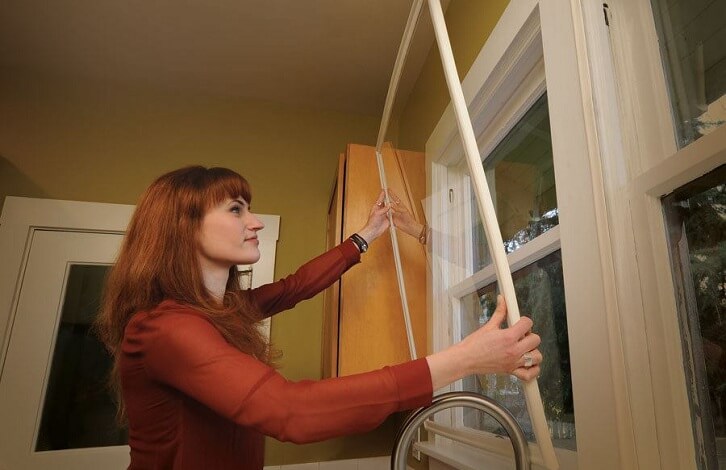
For better performance, a bigger air pocket between the insert and the window is better. When used with a single-pane window, window inserts can block up to more than 50-70% of noise entering a room. Both indowwindows and Citiquiet are professionals you can work with to get your custom window insert.
Though window inserts seem expensive, compared to soundproof windows, they are very cost-effective, and they also reduce more noise from the outside.
Storm windows, unlike interior window inserts, are built on the outside as secondary windows.
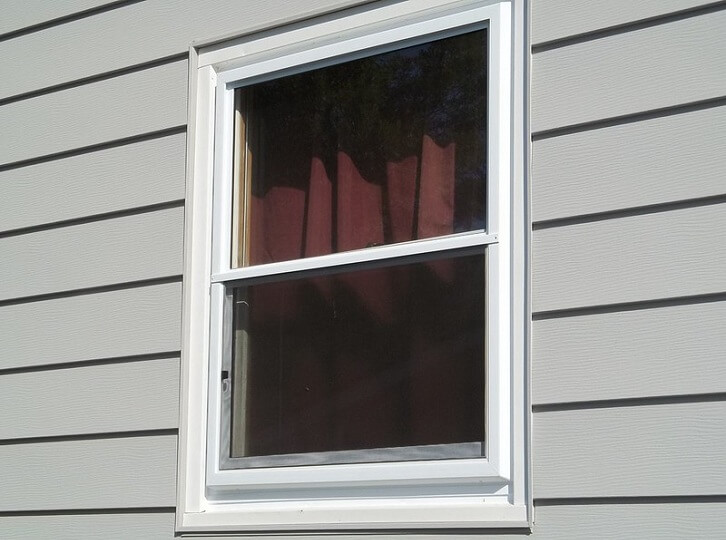
To effectively reduce noise transmission, storm windows like window inserts add another layer of glass to the existing window. They are available in different glass thickness sizes, laminates, glazing to improve sound-reducing properties.
Wrapping Up
While you cannot control noise, you can block or reduce most of it from entering a room. Apart from windows, soundproofing a room should also focus on the door, ceiling and floor, and existing walls. I hope the steps I outlined above will help you get peace at home.
If you have anything to add, comments or questions, please leave a reply below, and I’ll get back to you.

